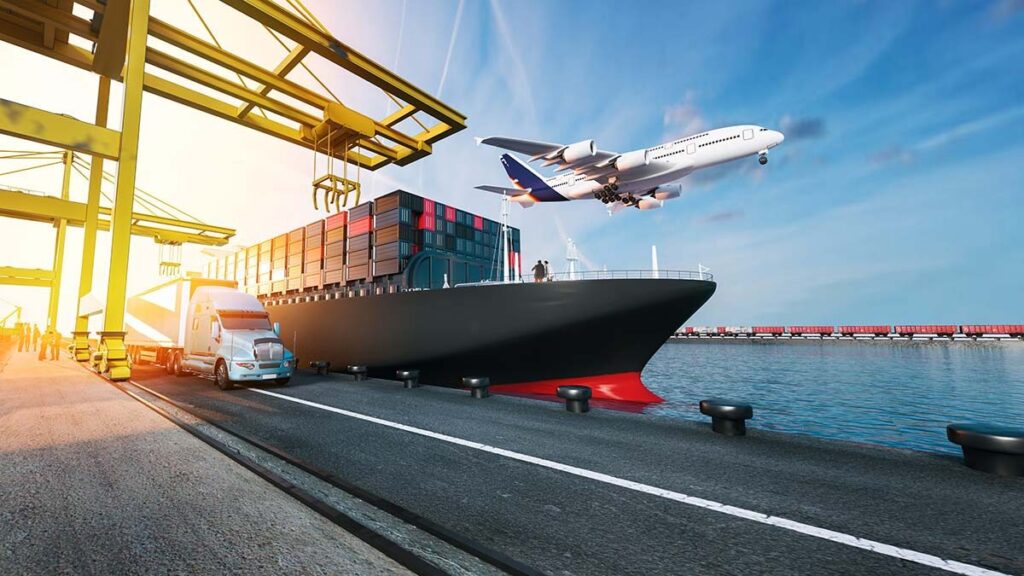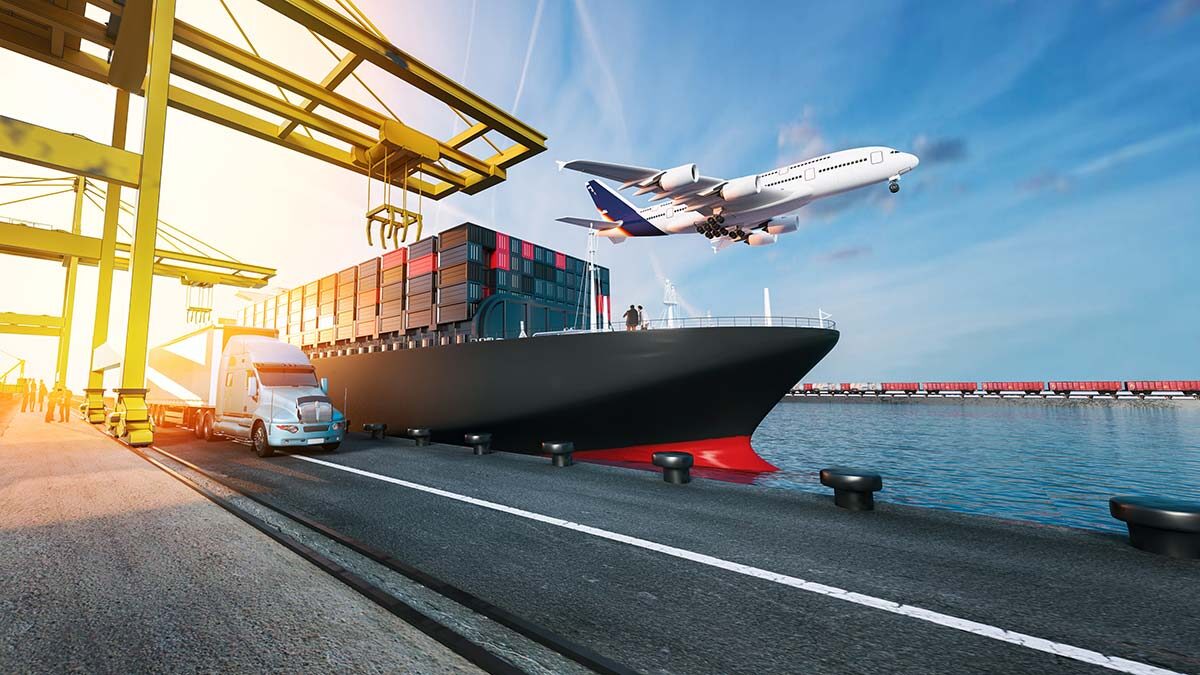China and Poland are two important trading partners in the global market. According to the World Bank, China was the largest exporter and the second-largest importer of goods in the world in 2020, while Poland was the 23rd-largest exporter and the 20th-largest importer. The trade volume between the two countries reached $33.47 billion in 2020, an increase of 8.3% year-on-year.
Factors affecting shipping costs

The cost of shipping goods from China to Poland or from Poland to China depends on several factors, such as:
- The weight and volume of the shipment: The heavier and larger the shipment, the more expensive it will be to ship. However, some shipping methods have a minimum chargeable weight or volume, which means that you will pay a fixed rate regardless of the actual weight or volume of your shipment. For example, air freight usually has a minimum chargeable weight of 100 kg, while sea freight usually has a minimum chargeable volume of 1 cubic meter.
- The distance and transit time: The farther and longer the shipment travels, the more expensive it will be to ship. However, some shipping methods have a fixed rate per kilometer or per day, which means that you will pay the same rate regardless of the actual distance or transit time of your shipment. For example, rail freight usually has a fixed rate per kilometer, while courier services usually have a fixed rate per day.
- The mode of transportation: The mode of transportation refers to the way the shipment is moved from the origin to the destination, such as by air, sea, rail, road, or a combination of these. Each mode of transportation has its own advantages and disadvantages in terms of cost, speed, reliability, safety, and environmental impact. For example, air freight is the fastest and most reliable but also the most expensive and the least eco-friendly, while sea freight is the cheapest and the most eco-friendly but also the slowest and the least reliable.
- The origin and destination ports: The origin and destination ports refer to the places where the shipment is loaded and unloaded from the mode of transportation, such as airports, seaports, railway stations, or warehouses. Each port has its own fees and charges, such as terminal handling charges, port dues, storage fees, or demurrage fees. These fees and charges vary depending on the location, size, capacity, and congestion of the port.
- The incoterms: The incoterms refer to the international commercial terms that define the responsibilities and risks of the seller and the buyer in the shipping process, such as who pays for the transportation, insurance, customs clearance, and taxes. There are 11 incoterms in total, but the most common ones are EXW (Ex Works), FOB (Free On Board), CIF (Cost, Insurance, and Freight), and DDP (Delivered Duty Paid). The choice of incoterms affects the shipping costs, as it determines who bears the costs of each stage of the shipping process.
- The customs duties and taxes: The customs duties and taxes refer to the fees and charges that the customs authorities of the origin and destination countries impose on the shipment, based on the value, quantity, type, and origin of the goods. The customs duties and taxes vary depending on the trade agreements, tariff schedules, and regulations of each country. The customs duties and taxes affect the shipping costs, as they increase the total cost of the shipment.
Choosing the right shipping method

The choice of the right shipping method depends on your specific needs and preferences, such as the budget, deadline, quality, quantity, and type of the goods. There is no one-size-fits-all solution, as each shipping method has its own pros and cons. However, here are some general guidelines to help you choose the right shipping method:
- Air freight: Air freight is the best option if you need to ship small, light, valuable, or perishable goods that require fast and reliable delivery. Air freight can deliver your goods from China to Poland or from Poland to China in 3 to 7 days, depending on the availability of flights and the customs clearance process. However, air freight is also the most expensive and the least eco-friendly option, as it consumes a lot of fuel and emits a lot of carbon dioxide. Air freight is also subject to strict regulations and limitations on the size, weight, and type of the goods, such as dangerous goods, liquids, or batteries.
- Sea freight: Sea freight is the best option if you need to ship large, heavy, or bulky goods that do not require urgent delivery. Sea freight can deliver your goods from China to Poland or from Poland to China in 30 to 45 days, depending on the shipping route and the customs clearance process. However, sea freight is also the slowest and the least reliable option, as it is affected by weather conditions, port congestion, and shipping delays. Sea freight is also subject to various fees and charges, such as port fees, container fees, or surcharges.
- Rail freight: Rail freight is a good option if you need to ship medium-sized, medium-weight, or non-perishable goods that require relatively fast and reliable delivery. Rail freight can deliver your goods from China to Poland or from Poland to China in 15 to 20 days, depending on the railway network and the customs clearance process. Rail freight is also cheaper and more eco-friendly than air freight, as it consumes less fuel and emits less carbon dioxide. However, rail freight is also more expensive and less eco-friendly than sea freight, as it still consumes some fuel and emits some carbon dioxide. Rail freight is also subject to limited availability and capacity, as it depends on the railway infrastructure and the demand of the market.
- Road freight: Road freight is a good option if you need to ship small, light, or flexible goods that require door-to-door delivery. Road freight can deliver your goods from China to Poland or from Poland to China in 10 to 15 days, depending on the road network and the customs clearance process. Road freight is also more convenient and flexible than other shipping methods, as it can access remote areas and adjust to your specific needs. However, road freight is also more expensive and less eco-friendly than sea freight or rail freight, as it consumes more fuel and emits more carbon dioxide. Road freight is also subject to traffic conditions, road tolls, and driver regulations.
- Multimodal freight: Multimodal freight is a good option if you need to ship goods that require a combination of different shipping methods, such as air-sea, sea-rail, or rail-road. Multimodal freight can deliver your goods from China to Poland or from Poland to China in 20 to 30 days, depending on the shipping methods and the customs clearance process. Multimodal freight is also more flexible and efficient than other shipping methods, as it can optimize the cost, speed, reliability, and environmental impact of the shipping process. However, multimodal freight is also more complex and risky than other shipping methods, as it involves more parties, contracts, and documents. Multimodal freight is also subject to coordination and communication challenges, as it requires seamless integration and cooperation among the different shipping methods.
Navigating customs regulations and documentation

The customs regulations and documentation are the rules and requirements that the customs authorities of the origin and destination countries impose on the shipment, such as the customs duties, taxes, licenses, permits, certificates, and declarations. The customs regulations and documentation vary depending on the value, quantity, type, and origin of the goods, as well as the trade agreements, tariff schedules, and regulations of each country.
The customs regulations and documentation are essential for the smooth and legal shipping process, as they ensure the compliance, safety, and security of the shipment. The customs regulations and documentation also affect the shipping costs, as they determine the amount of fees and charges that the customs authorities collect from the shipment.
The customs regulations and documentation are complex and dynamic, as they change frequently and differ from country to country. Therefore, it is important to research and prepare the customs regulations and documentation before shipping your goods from China to Poland or from Poland to China. Here are some general steps to help you navigate the customs regulations and documentation:
- Step 1: Determine the HS code and the origin of the goods: The HS code (Harmonized System code) is a six-digit code that identifies the type and category of the goods, such as 8517.12 for mobile phones or 8703.23 for cars. The origin of the goods is the country where the goods are produced or manufactured, such as China or Poland.
- Step 2: Check the customs duties and taxes: The customs duties and taxes are the fees and charges that the customs authorities of the origin and destination countries collect from the shipment, based on the HS code, the origin, the value, and the quantity of the goods. The customs duties and taxes vary depending on the trade agreements, tariff schedules, and regulations of each country. You can check the customs duties and taxes for your goods by using online tools, such as the World Customs Organization website, the European Union website, or the China Customs website. You can also consult a freight forwarder or a shipping agent for more accurate and updated information.
- Step 3: Prepare the customs documents: The customs documents are the papers and forms that the customs authorities of the origin and destination countries require from the shipment, such as the commercial invoice, the packing list, the bill of lading, the certificate of origin, or the customs declaration. The customs documents vary depending on the mode of transportation, the incoterms, and the type of the goods. You can prepare the customs documents by using online tools, such as the International Chamber of Commerce website, the FedEx website, or the DHL website. You can also consult a freight forwarder or a shipping agent for more guidance and assistance.
- Step 4: Submit the customs documents: The customs documents must be submitted to the customs authorities of the origin and destination countries before or upon the arrival of the shipment, depending on the mode of transportation, the incoterms, and the type of the goods. The customs documents must be complete, accurate, and consistent, as any errors, discrepancies, or omissions can result in delays, penalties, or confiscation of the shipment. You can submit the customs documents by using online tools, such as the Single Window system, the Electronic Data Interchange system, or the Authorized Economic Operator system. You can also consult a freight forwarder or a shipping agent for more support and convenience.
Tips for packaging and labeling your shipment

The packaging and labeling of your shipment are important for the protection, identification, and delivery of your goods. The packaging and labeling of your shipment must comply with the standards and regulations of the origin and destination countries, as well as the mode of transportation and the type of the goods. Here are some tips for packaging and labeling your shipment:
- Use sturdy and durable materials: The materials used for packaging and labeling your shipment must be sturdy and durable, such as cardboard boxes, wooden crates, plastic containers, or metal drums. The materials must be able to withstand the weight, pressure, and vibration of the shipment, as well as the weather conditions, handling, and storage of the shipment. The materials must also be recyclable, biodegradable, or reusable, as much as possible, to reduce the environmental impact of the shipment.
- Use adequate and appropriate cushioning: The cushioning used for packaging and labeling your shipment must be adequate and appropriate, such as bubble wrap, foam peanuts, paper, or cloth. The cushioning must be able to fill the empty spaces and gaps in the packaging, as well as to protect the goods from shock, impact, or abrasion. The cushioning must also be compatible with the goods, as some goods may react with certain materials, such as liquids, chemicals, or batteries.
- Use clear and legible labels: The labels used for packaging and labeling your shipment must be clear and legible, such as stickers, tags, or markers. The labels must contain the essential information about the shipment, such as the name, address, and contact details of the sender and the receiver, the HS code and the description of the goods, the weight and the volume of the shipment, the incoterms and the mode of transportation, and any special instructions or warnings. The labels must also be visible and accessible, as well as resistant to water, heat, or fading.
Tracking and monitoring your shipment

The tracking and monitoring of your shipment are important for the visibility, security, and delivery of your goods. The tracking and monitoring of your shipment allow you to know the status, location, and condition of your shipment, as well as to anticipate and resolve any issues or problems that may arise during the shipping process. Here are some ways to track and monitor your shipment:
- Use online tools: The online tools are the websites or applications that provide real-time information and updates about your shipment, such as the Track and Trace system, the Global Positioning System, or the Radio Frequency Identification system. The online tools require you to enter the tracking number, the barcode, or the RFID tag of your shipment, which are usually provided by the shipping company, the freight forwarder, or the shipping agent. The online tools can also send you notifications or alerts via email, SMS, or phone call, if there are any changes or issues with your shipment.
- Use human resources: The human resources are the people or organizations that provide personal and professional assistance and support for your shipment, such as the shipping company, the freight forwarder, the shipping agent, or the customs broker. The human resources can help you with the preparation, documentation, clearance, and delivery of your shipment, as well as with the tracking, monitoring, and troubleshooting of your shipment. The human resources can also communicate with you via email, phone call, or face-to-face meeting, if you have any questions or concerns about your shipment.
Managing shipping costs and saving money

The shipping costs are the expenses and charges that you incur for shipping your goods from China to Poland or from Poland to China, such as the transportation costs, the insurance costs, the customs costs, and the port costs. The shipping costs can be significant and affect your profit margin and competitiveness in the market. Therefore, it is important to manage and save your shipping costs as much as possible. Here are some tips for managing and saving your shipping costs:
- Compare and negotiate: The shipping costs can vary depending on the shipping company, the freight forwarder, the shipping agent, or the customs broker that you choose to work with. Therefore, it is advisable to compare and negotiate the shipping costs with different providers and select the best option that suits your needs and budget. You can also leverage your volume, frequency, or loyalty to get discounts, rebates, or incentives from the providers.
- Consolidate and optimize: The shipping costs can depend on the weight, volume, and number of the shipments that you send or receive. Therefore, it is advisable to consolidate and optimize your shipments as much as possible. You can consolidate your shipments by combining multiple orders or deliveries into one shipment, or by sharing the space or the container with other shippers.
- Consolidate and optimize: The shipping costs can depend on the weight, volume, and number of the shipments that you send or receive. Therefore, it is advisable to consolidate and optimize your shipments as much as possible. You can consolidate your shipments by combining multiple orders or deliveries into one shipment, or by sharing the space or the container with other shippers. You can optimize your shipments by choosing the right size and shape of the packaging, or by using pallets, crates, or boxes that fit the dimensions of the mode of transportation.
- Plan and schedule: The shipping costs can vary depending on the demand and supply of the shipping market, as well as the season and the time of the year. Therefore, it is advisable to plan and schedule your shipments as much as possible. You can plan your shipments by forecasting your inventory and sales, or by aligning your production and distribution cycles. You can schedule your shipments by booking your space or your container in advance, or by avoiding peak periods or holidays that may cause congestion or delays.
- Insure and protect: The shipping costs can increase due to the risks and uncertainties of the shipping process, such as loss, damage, theft, or delay of the shipment. Therefore, it is advisable to insure and protect your shipment as much as possible. You can insure your shipment by purchasing a cargo insurance policy that covers the value and the type of your goods, or by choosing an incoterm that includes the insurance cost. You can protect your shipment by using proper packaging and labeling, or by tracking and monitoring your shipment.
Working with a freight forwarder or a shipping agent

A freight forwarder or a shipping agent is a person or an organization that acts as an intermediary between you and the shipping company, the customs authorities, and other parties involved in the shipping process. A freight forwarder or a shipping agent can provide you with various services and benefits, such as:
- Expertise and experience: A freight forwarder or a shipping agent has the expertise and experience in the shipping industry, such as the knowledge of the shipping methods, the customs regulations, the documentation, and the best practices. A freight forwarder or a shipping agent can advise you on the most suitable and cost-effective shipping solutions for your goods, as well as help you with the preparation, documentation, clearance, and delivery of your shipment.
- Network and resources: A freight forwarder or a shipping agent has the network and resources in the shipping market, such as the connections with the shipping companies, the customs authorities, and other service providers. A freight forwarder or a shipping agent can access the best rates, routes, and schedules for your shipment, as well as handle the logistics, coordination, and communication of your shipment.
- Convenience and peace of mind: A freight forwarder or a shipping agent can provide you with convenience and peace of mind in the shipping process, as they can take care of the entire shipping process for you, from start to finish. A freight forwarder or a shipping agent can save you time, money, and hassle, as well as reduce the risks and uncertainties of the shipping process.
However, working with a freight forwarder or a shipping agent also has some drawbacks and challenges, such as:
- Cost and quality: A freight forwarder or a shipping agent may charge you a fee or a commission for their services, which may increase your shipping costs. A freight forwarder or a shipping agent may also vary in the quality and reliability of their services, which may affect your shipping performance and satisfaction. Therefore, it is important to compare and evaluate the cost and quality of different freight forwarders or shipping agents before choosing one to work with.
- Trust and transparency: A freight forwarder or a shipping agent may not be fully transparent or trustworthy in their dealings with you, such as the rates, the routes, the schedules, or the status of your shipment. A freight forwarder or a shipping agent may also have conflicts of interest or hidden agendas, such as favoring certain shipping companies or service providers over others. Therefore, it is important to establish and maintain trust and transparency with your freight forwarder or shipping agent, such as by signing a contract, setting clear expectations, or requesting regular updates.





